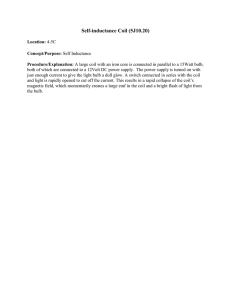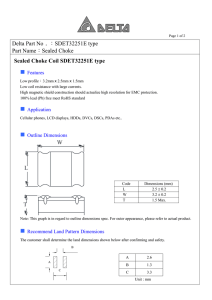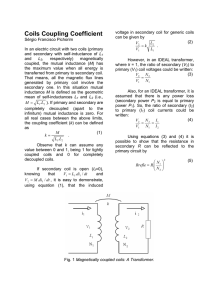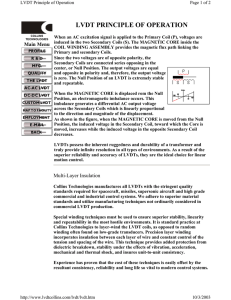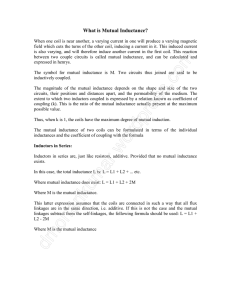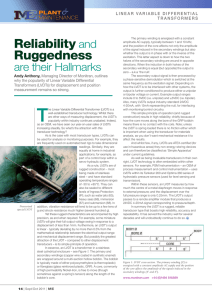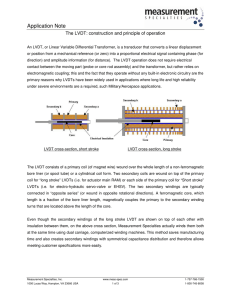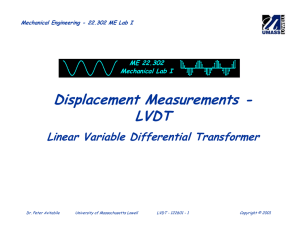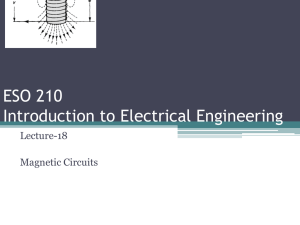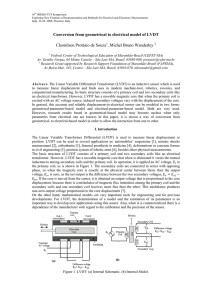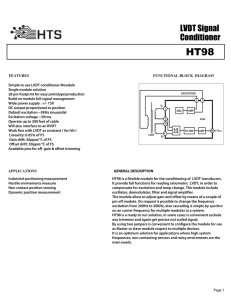Linearly Variable Differential Transformers \(LVDTs\)
advertisement
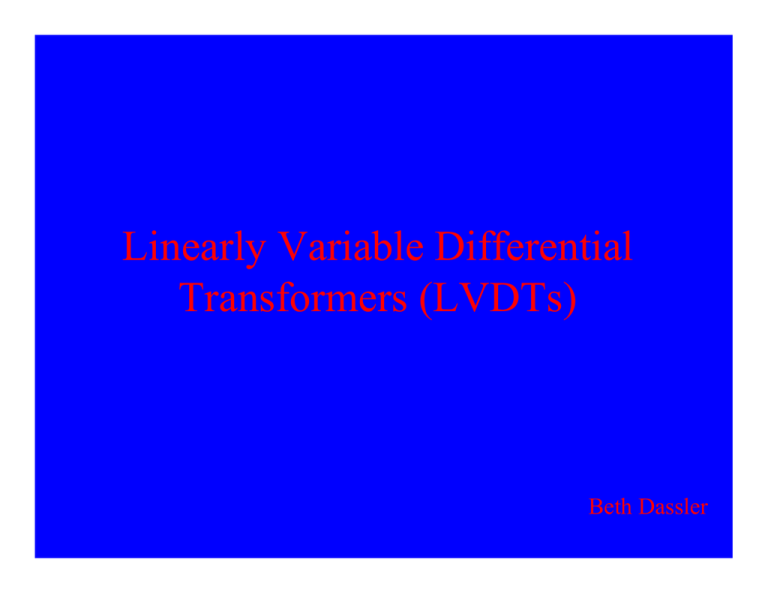
Linearly Variable Differential Transformers (LVDTs) Beth Dassler Typical LVDTs1 USES? To convert positional information into an electrical signal. -pressure -displacement -force (a) Section view (b) circuit diagram 2 • • Made of a primary coil, two secondary coils, and a magnetic core • Primary coil excited by an AC signal (generally a sine wave) • Secondary coils are set up in series opposition so when the core is centered the output voltages cancel out • Operates on the principle of mutual inductance • As the core moves toward one secondary coil, the induced voltage increases while is decreases in the other secondary coil M = mutual inductance in k = coefficient of coupling between two inductances L1 and L2 = values of the two inductances L=n2Gµ n is the number of turns G is the geometric form factor µ is the effective permeability of the medium3 Mutual Inductance The induction of a voltage in one coil in response to a change in current in the other coil.3 Advantages • • • • • • Sensitive Reliable Robust Low friction High resolution Ability to operate at high temperatures. Disadvantages • Requires complex signal processing instrumentaion3 • Requires frequent calibration5 Example: catheter tip pressure transducer Diaphragm Slug Catheter LVDT Example: measuring muscle contraction Force Muscle Balance Isotonic contraction (same force) Isometric contraction Weight (same length) LVDT Muscle sounds References 1. Schaevitz Sensors. LVDT Functional Advantages and Operating Principles. http://www.sal.wisc.edu/PFIS/docs/archive/Product%20Manuals/schaevitz/LVDT_ Intro.pdf-4.pdf 2. Longoria, Prof. R.G. Notes on LVDTs. Department of Mechanical Engineering, University of Texas at Austin, Dynamic Systems and Controls Lab. 30 March 2000. http://www.me.utexas.edu/~lotario/me244L/labs/forcemotion/lvdt.html 3. Webster, J.G. (ed.) Medical Instrumentatino, Application and Design 3rd Edition. John Wiley & Sons Inc. New York, NY, 1998. 4. Heiserman, D.L. Basic Electronics Part 2, Elements of AC Electricity. The SweetHaven Online Interactive Tour. Unit 2: inductance; Module 3: mutual inductance. 1997. http://www.sweethaven.com/acee/forms/frm0203.htm 5. Anter Corporation. The Advantages of Digital Displacement Transducers over LVDTs. http://www.anter.com/Technotes/TN64.pdf

